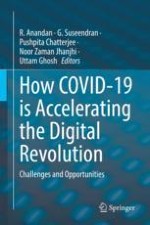2022 | OriginalPaper | Chapter
8. Computational Intelligence Using Big Data for Fight Against Covid-19 Pandemic in Healthcare Environment
Authors : Ashok Kumar Munnangi, Ramesh Sekaran, Arun Prasath Raveendran, Manikandan Ramachandran
Published in: How COVID-19 is Accelerating the Digital Revolution
Publisher: Springer International Publishing
Activate our intelligent search to find suitable subject content or patents.
Select sections of text to find matching patents with Artificial Intelligence. powered by
Select sections of text to find additional relevant content using AI-assisted search. powered by
